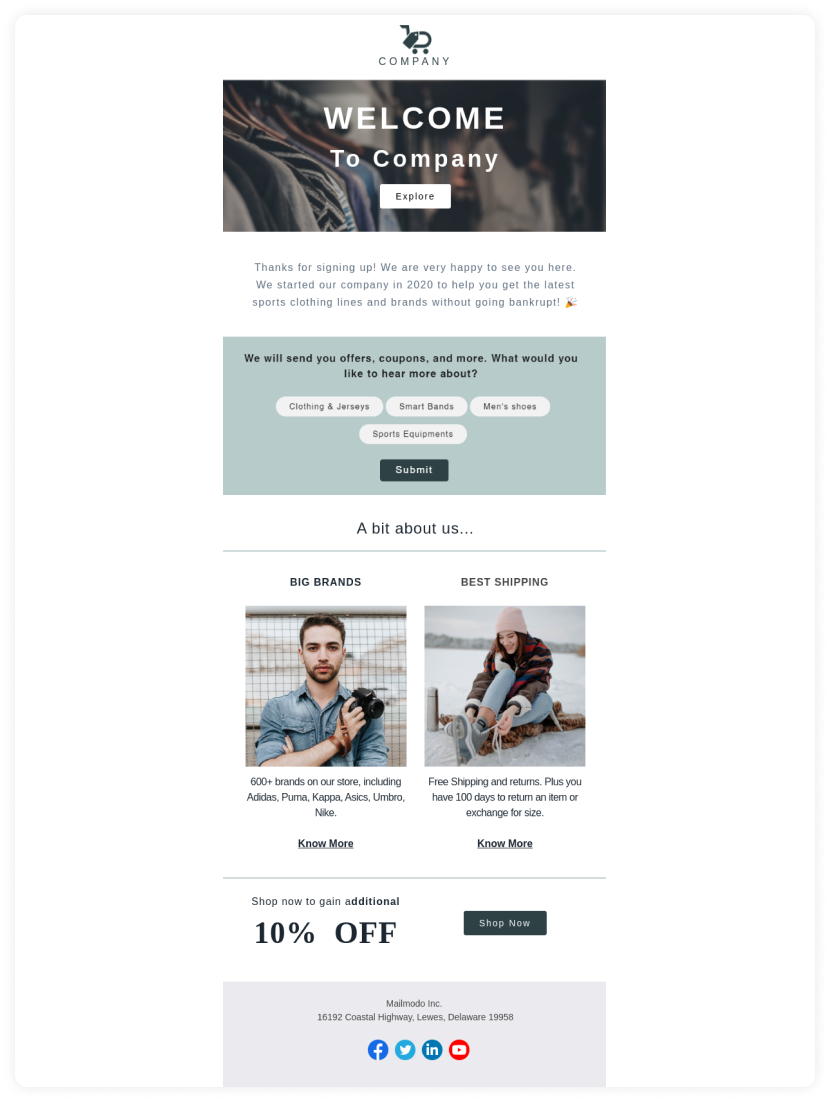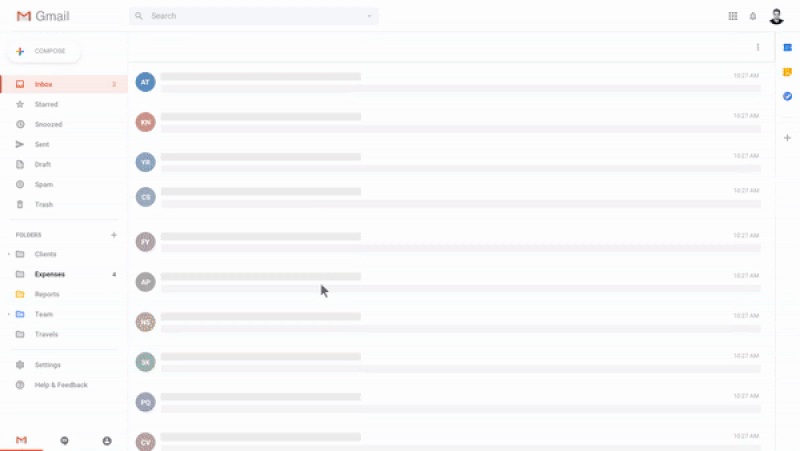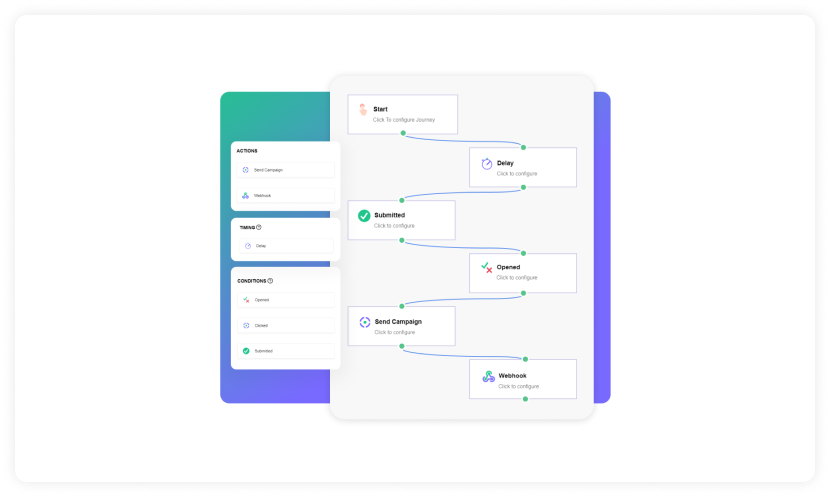Imagine you’re a founder looking to hire people to market your eCommerce store. From running campaigns and managing socials to optimizing copies and strategizing, it’s too much work. Not to mention, you will require a lot of people and capital for smooth sailing. That is an investment most business owners aren’t willing to make, which is why they find marketing daunting.
Our suggestion? Make your life easier with eCommerce marketing automation. It’s the silver bullet that will enable you to make things happen without toiling away. Ready to streamline your marketing functions? Dive right in!
Table of contents
What is eCommerce marketing automation?
eCommerce marketing automation is the equivalent of an ideal employee. Humans get bored of doing mundane tasks (can you blame them?) day in and day out. Automation software will stay enthusiastic while managing repetitive marketing activities and workflows.
It’s like putting things on autopilot, really. From nurture emails to remarketing ads, the software will carry everything out for you seamlessly and also manage and track your metrics.
As your company grows, manually creating each message to bring engagement will be impossible anyway. Consider marketing automation software a solid investment to grow your eCommerce business.
Why is eCommerce marketing automation important?
There are dozens of reasons why you should invest in automation tools, but here are the ones that are applicable to most eCommerce businesses.
1. Increase in conversions
77% of marketers using eCommerce automation tools in 2021 reported a boost in conversions. That is because these tools help you target the right people at the right time.
Imagine you run a bike store. If a customer buys a bike from you, you know it will require servicing and a change in lighting in the next season. Marketing automation enables you to create a workflow which triggers emails, notifications, or SMSes to help your customer get more value out of the bike, while you make more revenue. It’s a win-win situation, really.
2. High average order value (AOV)
Most eCommerce company owners make the expensive mistake of focusing on customer acquisition while ignoring AOV, which is much cheaper. By using marketing automation software, you can identify products selling like hot cakes, segment your customers, and do split testing to experiment with price changes. The higher you price your products, the higher your AOV.
3. Improved customer insights
Roughly 34% of marketers expect marketing automation to improve customer insights. They aren’t wrong. Every time a prospect will fill up a survey, sign up for a newsletter or buy from you, you will not only gain identification data like name, location and email address but also behavioral data like:
Product preferences
Busy time of the day
Popular products
All these insights will ultimately help you improve your marketing strategies.
4. Reduced human errors
When you’re writing content for marketing collaterals, it’s natural for your brain to get scrambled after one point. This might lead to a variety of errors, some minor and others major. Automation software is useful for reducing that risk. It will perform precisely what you want it to do once you've taught it.
5. Boosts efficiency
Can you imagine a life without Google Maps? Think of automation as what Google Maps does for you. You only need to enter your destination, add stops to your trip, check the traffic, choose the shortest route, and Google Maps will help you navigate.
Similarly, by automating marketing processes, you are offloading the work of your employees, making them more productive and boosting their efficiency. Research by Nucleus confirms that 82% of marketers recognized increased efficiency after adopting marketing automation.
What to look for in eCommerce marketing automation tools?
Determining your goal is important to pick the right automation tool for your eCommerce business. Perhaps email marketing is your goal, or you need to integrate the marketing tool with your software. Consider these things before you choose one:
1. Ease of use
Check whether the installation of the automation software is simple. If the tool has a difficult user interface or navigation and you don’t have the time and resources for training your employees, it’s better to move on. The objective is to automate the marketing processes, not to hinder them.
Pro tip: A software which has explanatory or contextual pop ups appear on demand can help you bring your team up to speed fast.
2. Pricing
Find a software that aligns with your budget and needs rather than falling into the luxury trap. Just because a tool is expensive doesn’t mean it will generate you more revenue.
3. Integrations
Your new eCommerce marketing software should ideally integrate with your existing softwares. While some SaaS systems integrate with automated systems and plugins, others require APIs and webhooks to integrate with your programs.
4. Customer support
With on-demand tech support and customer support teams available over phone, email, or chat, you can expect quicker response time and conflict resolution. Look for a software which is backed by a team ready to guide you through the setup process and solve your queries.
5. Metrics and analytics
Make sure the new software can measure and create reports based on your metrics and marketing key performance indicators (KPIs).
Best eCommerce marketing automation softwares
It’s time to test drive the front-runners. Here’s a lineup of the best eCommerce marketing automation softwares.
1. Mailmodo
Mailmodo specializes in email marketing automation services for eCommerce businesses. Easy-to-make workflows enable retailers to automate the user journey with automated email campaigns. The software uses drag-and-drop builder, mobile-friendly templates and custom-made integrations to launch successful AMP email campaigns and maximize customer lifetime value.
Pricing: Book a demo to request custom price
2. Omnisend
One of the most popular marketing automation solutions for eCommerce, Omnisend addresses issues that the majority of eCommerce marketers confront, such as cart abandonment. It allows you to create campaigns based on your customers' actions and tracks how marketing automation affects sales.
Pricing: $16 (Standard), and $59 (Pro)
💡 Related guide: See why Mailmodo is the best Omnisend alternative you can use
3. ActiveCampaign
ActiveCampaign is a three-in-one platform that includes email marketing, digital marketing automation, and a CRM for eCommerce businesses. With this tool, you may use a robust visual automation editor to map out exactly what's going on in your automation. There are 600+ prebuilt automation available for personalization and segmentation.
Pricing: $9 (Lite), $49 (Plus), $129 (Professional), and $229 (Enterprise)
💡 Related guide: See why Mailmodo is the best ActiveCampaign alternative you can use
4. Klaviyo
Klaviyo enables eCommerce company owners to create tailored experiences across email, SMS, marketing channels, and in-app alerts. It is an email-specific marketing automation system that includes a number of pre-designed templates for quick email production as well as segmentation.
Pricing: Free (<250 contacts), $20 monthly (251–500 contacts), $30 monthly (501–1000 contacts)
💡 Related guide: See why Mailmodo is the best Klaviyo alternative you can use
5. Drip
Drip helps eCommerce brands generate revenue through automated SMS messages and email marketing. Not just that, Drip’s workflows target and segment audiences at the right time in the right way to acquire more customers and retain existing ones.
Pricing: $19 (500 subscribers), custom plans for enterprises
💡 Related guide: See why Mailmodo is the best Drip alternative you can use
6. Rejoiner
Rejoiner is a terrific tool for ecommerce marketers that don't want to spend valuable internal resources crafting campaigns. From design to strategy to analytics, it's basically an email marketing platform. Rejoiner is far more versatile and robust than similar email builders now available on the market, as compared to other programmes.
Pricing: $95 (2,000 contacts)
6. Autopilot
The complete customer journey is mapped and automated using Autopilot, a user-friendly marketing automation platform. Your team can mark email automation sequences with entertaining emojis and stickers, allowing everybody to contribute in real-time. Although it doesn’t have a built-in CRM, you can still use it to automate marketing communications.
Pricing: $29 (Campaign), $99 (Pro), $299 (Business)
7. Drift
Drift connects with a number of prominent ecommerce platforms, as well as top SaaS suppliers, making it suitable for a variety of businesses. Bot playbacks, automated meetings, and automatic CRM connectivity are all included in Drift's Pro tier.
Pricing: Available upon request
8. Hubspot
HubSpot is a comprehensive marketing platform that includes a marketing automation toolbox. Its workflows feature automates processes beyond email, allowing you to scale your business and spend less time on mundane duties. With Hubspot, you can improve your marketing by developing product-specific re-engagement advertisements etc.
Pricing: $45 monthly (1000 contacts), $3200 monthly (10,000 contacts)
Proven eCommerce marketing automation strategies
Here are some marketing automation strategies that will make a difference for your eCommerce business right away:
1. Send automated welcome emails
Use this AMP welcome email template to welcome new leads. By including forms into the email design, you will be able to learn more about your consumers.

The welcome email also contains a discount code to encourage customers to explore the eCommerce store.
Your follow-up emails can be product recommendations or discount promos which can be triggered 2 days after sending the first email automatically. You can set up the trigger point with Mailmodo using app integrations like Zapier and Integromat or API to get started with your customer email journey.
Related resources:
2. Automate cart recovery
This ready-to-use AMP email template will boost your sales by recovering abandoned carts. The email uses product displays, interactive elements, and a form inside emails to engage with your customers better.

You can automate a 3-day email journey which starts 4 hours after the cart is abandoned. 4 hours is the ideal delay period as suggested by eCommerce experts.
Related guide: Abandoned Cart Email Series for E-commerce and D2C Brands
3. Win-back emails
Win-back emails will help you increase the lifetime relationship of your clients with your eCommerce business. Set up a win-back email campaign with 3-4 emails spaced 24-72 hours apart to reclaim subscribers.
Email 1: Inform your consumer that you've observed they've been gone for some time. Product recommendations based on previous browsing and purchasing activity may be included in your email.
Email 2: Request feedback from customers.
Email 3: Incentivize your customers to take action by sending them rewards.
This ready-to-use template by Mailmodo is designed to help you actively re-engage with your customers.

4. Automate customer feedback collection
Ecommerce conversion rates are boosted by ratings and reviews. As a result, if you're not actively encouraging your consumers to leave feedback on their purchases, you might be losing a lot of money.
Luckily, marketing automation makes it simple for eCommerce business owners to gather reviews, as shown below.

Read how Razorpay got 257% higher survey responses and an 87% increase in lead conversion rate with Mailmodo.
Related guide: Why Your NPS Survey is Not Getting Responses
5. Automate customer journey to get leads
By automating and mapping your customer journey, you can send emails to your segmented audience based on trigger points, such as website activity or a chat with customer service.

With Mailmodo’s custom journey builder, you can:
👉 Schedule send times and add time delays
👉 Apply conditional logic within the email
👉 Integrate with external applications
Key takeaways
This guide showed you five areas of your eCommerce business you should automate to get measurable results. Consider implementing them using one or more of the marketing automation software listed in this article to increase your ROI and decrease customer churn.
What you should do next
Hey there, thanks for reading till the end. Here are 3 ways we can help you grow your business:
Talk to an email expert. Need someone to take your email marketing to the next level? Mailmodo’s experts are here for you. Schedule a 30-minute email consultation. Don’t worry, it’s on the house. Book a meet here.
Send emails that bring higher conversions. Mailmodo is an ESP that helps you to create and send app-like interactive emails with forms, carts, calendars, games, and other widgets for higher conversions. Get started for free.
Get smarter with our email resources. Explore all our knowledge base here and learn about email marketing, marketing strategies, best practices, growth hacks, case studies, templates, and more. Access guides here.


